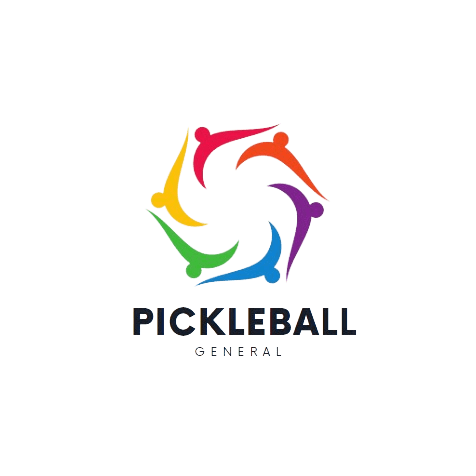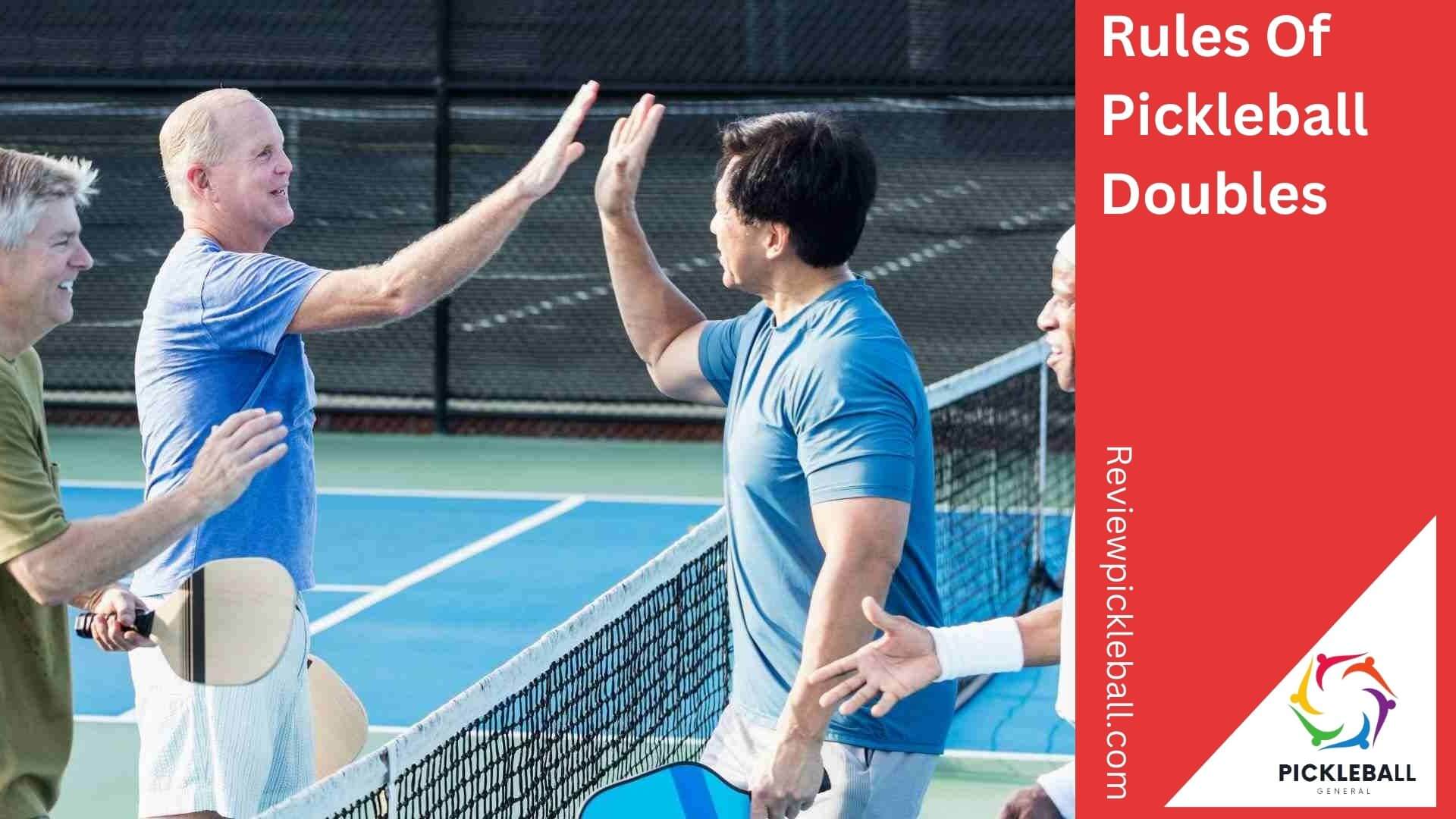Pickleball has rapidly become one of the most popular sports worldwide, attracting players of all ages and skill levels. Rules of Pickleball Doubles play in pickleball emphasizes teamwork and strategy, enhancing the game’s excitement. Understanding doubles play rules and strategies can elevate your game and make matches more enjoyable and competitive.
Basic Rules of Pickleball Doubles
Court Dimensions and Setup
Pickleball courts measure 20 feet wide and 44 feet long, divided by a 34-inch-high net. The court includes right and left service courts, a non-volley zone (the kitchen), and baselines.
Serving Rules
In doubles play, serve diagonally across the court, ensuring the ball lands within the opposite service court. Use an underhand serve with the paddle below the waist, and stand behind the baseline until the ball is struck. Only the serving team scores points and continues to serve until committing a fault.
Scoring System
Pickleball doubles use rally scoring, with games typically played to 11 points, requiring a two-point margin to win. Only the serving team scores points. The server calls the score before serving, stating their team’s score, the opposing team’s score, and the server number (1 or 2).
Serving Strategies
Importance of a Good Serve
A well-executed serve sets the rally’s tone and puts opponents on the defensive. A strong, accurate serve can lead to weak returns, giving the serving team an early advantage.
Types of Serves
Several types of serves in pickleball include the drive serve, lob serve, and spin serve. Each serve has unique benefits and can be used strategically based on the opponents’ weaknesses.
Placement and Spin
Placing the serve in challenging spots, like deep in the service court or close to the sidelines, can challenge the returner. Adding spin to the serve can also make it more difficult to return cleanly.
Return of Serve Tactics
Positioning and Readiness
When returning serve, assume a ready position with knees bent and paddle up. Anticipate the serve and prepare to move quickly for a successful return.
Effective Return Shots
An effective return of serve should be deep and towards the middle of the court, reducing the angles for the serving team. This sets up the returning team for a favorable position at the net.
Setting Up for the Third Shot
The third shot often involves a drop shot aimed at landing softly in the kitchen, neutralizing the serving team’s advantage and allowing the returning team to advance to the net.
Also Read: What Are The 5 Serving Rules In Pickleball
The Third Shot Drop
Definition and Importance
The third shot drop is a soft shot that lands in the opponent’s kitchen, making it difficult for them to attack. This shot is crucial for transitioning from the baseline to the net.
Techniques for a Successful Drop
A successful third-shot drop requires precise control and a gentle touch. Regular practice improves consistency and effectiveness.
Practice Drills
Practice drills such as hitting drop shots from various court positions and simulating game scenarios to master this important skill.
NetPlay and Positioning
Advantages of Controlling the Net
Controlling the net allows players to dictate the game’s pace and execute offensive shots. Being at the net also reduces the opponents’ reaction time.
Proper Positioning and Movement
Proper positioning involves standing a step back from the net and maintaining a balanced stance. Move as a unit, maintaining a side-by-side formation to cover the court effectively.
Communication with Your Partner
Effective communication ensures that both players know their roles and can cover each other’s areas. Calling shots and using signals help maintain coordination.
Dinking Strategies
What is Dinking?
Dinking is a soft shot that lands in the opponent’s kitchen, aimed at creating opportunities for errors or weak returns. It is a key part of the game at the net.
Effective Dinking Techniques
Effective dinking involves a gentle touch and precise placement. Keeping the ball low and minimizing bounce makes it difficult for opponents to return aggressively.
Dinking Drills
Practice drills such as cross-court dinking and dink rallies to develop consistency and control in dinks.
Volleys and Smashes
When to Volley
Use volleys when positioned at the net and want to maintain pressure on opponents. Timing and positioning are crucial for effective volleys.
Techniques for Powerful Volleys
Powerful volleys require a firm grip, quick reflexes, and proper body positioning. Practice quick exchanges at the net to enhance volley skills.
Executing Smashes
Smashes are aggressive shots used to finish points. Successful smashes involve good timing, a strong swing, and aiming for open areas on the court.
Defensive Strategies
Preparing for Opponent Attacks
Prepare for opponent attacks by anticipating their shots and positioning yourself to respond effectively. Keep a low stance and paddle up for quick reactions.
Effective Defensive Shots
Effective defensive shots include blocks, resets, and lobs. These shots neutralize the opponent’s attacks and provide opportunities to regain control.
Staying Calm Under Pressure
Maintaining composure under pressure is essential. Take deep breaths and focus on the basics to stay calm and make smart decisions.
Communication and Teamwork
Importance of Communication
Communication is key in doubles play. Discuss strategies and call shots to ensure both players are on the same page and can react cohesively.
Developing a Team Strategy
Develop a team strategy by understanding each other’s strengths and weaknesses and planning accordingly. This includes positioning, shot selection, and play style.
Non-verbal Cues and Signals
Use non-verbal cues, such as paddle signals or hand gestures, to communicate discreetly and effectively during play.
Common Mistakes in Pickleball Doubles
Serving Faults
Common serving faults include foot faults, serving out of bounds, and failing to serve underhand. The practice serves to reduce these errors.
Poor Positioning
Poor positioning leads to missed shots and gaps in coverage. Stay aware of your position and your partner’s position.
Lack of Communication
Lack of communication results in confusion and missed opportunities. Regularly communicate with your partner to prevent these issues.
Advanced Strategies
Stacking
Stacking involves positioning partners on the same side of the court to optimize their strengths. This strategy can be particularly effective in tournament play.
Poaching
Poaching occurs when a player crosses over to their partner’s side to intercept a shot. This aggressive tactic can surprise opponents and create scoring opportunities.
Using Spins and Fakes
Adding spins and fakes to shots makes them more difficult to read and return. Practice these techniques to add a new dimension to your game.
Physical and Mental Preparation
Warm-up Exercises
Warm up with exercises such as stretching, jogging, and paddle drills to prepare the body for intense play and reduce the risk of injury.
Staying Focused and Composed
Staying focused involves maintaining a positive mindset and avoiding distractions. Visualization techniques and breathing exercises help maintain composure.
Dealing with Pressure
Handle pressure by staying calm and executing shots confidently. Focus on one point at a time to manage stress and maintain performance.
Equipment and Gear
Choosing the Right Paddle
Choose the right paddle by considering factors such as weight, grip size, and material. Try different paddles to find the best fit.
Appropriate Footwear and Attire
Wearing appropriate footwear and attire enhances performance and prevents injuries. Look for non-marking shoes with good grip and comfortable, breathable clothing.
Additional Gear Recommendations
Additional gear such as wristbands, hats, and sunglasses can improve comfort and performance on the court.
Conclusion
Mastering the rules and strategies of pickleball doubles can significantly enhance your game. Focus on serving, returning, positioning, communication, and advanced techniques to become a formidable player. Practice regularly, stay composed, and have fun on the court.
Also Read: Pickleball Kitchen Rules

